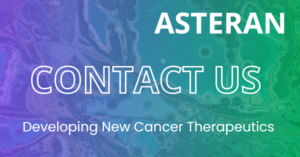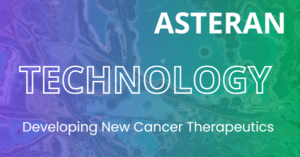Core Concepts in the Drug Discovery Process
The development of new therapeutic agents, whether small molecules or biologics, represents a highly intricate and resource-demanding endeavor that often spans multiple years and incurs substantial costs. Drug discovery is fundamentally concerned with the identification and validation of biological targets that can modulate disease processes. These targets are rigorously evaluated for their potential efficacy and safety in human populations. Clinical testing is a critical component of the development pipeline, wherein promising drug candidates are subjected to trials that assess their clinical utility. From this point, the fate of a drug candidate is determined by the results of the clinical development program, biopharmaceutical evaluations, and preclinical safety assessments. Each phase of drug discovery, from initial target identification to final production, must be meticulously characterized, explored, and optimized. The process is iterative, often requiring multiple refinements at each step. Furthermore, identifying suitable biological targets for every newly approved drug necessitates advanced research methodologies, underscoring the critical role of cutting-edge technologies in drug discovery.
What is a Target?
In the context of drug discovery, a target refers to a biological entity – typically a protein, gene, or RNA – that a therapeutic agent interacts with to elicit a desired pharmacological effect. A well-chosen target must be efficacious, safe, and aligned with both clinical and commercial objectives. The selection of molecular targets is primarily guided by the mechanistic understanding of disease pathogenesis, positioning it as a cornerstone of modern drug development strategies.
Evolution of Drug Discovery Approaches
Drug discovery methodologies have evolved significantly, often shaped by the availability of novel technologies and an expanding understanding of disease biology. Asteran is at the forefront of this evolution, offering a diverse array of products and services aimed at accelerating drug discovery initiatives. These include assay kits, enzymes, substrates, and compound libraries, supporting both primary and secondary screening processes. Additionally, immunodetection assays and cytotoxicity screens enable the reliable evaluation of biomarkers and safety profiles in vitro. Our goal is to enhance the efficiency, reduce the cost, and increase the success rate of drug development through the provision of innovative and comprehensive research tools.
Target-Based Drug Discovery (TBD)
Two primary methodologies dominate the landscape of drug discovery: target-based drug discovery (TBD) and phenotypic screening. Over the past three decades, the pharmaceutical industry has predominantly employed TBD, where the focus is on identifying specific molecular targets most often proteins that play a critical role in disease progression and screening chemical compounds for activity against these targets. This approach has been instrumental in the development of numerous therapeutic agents, particularly those targeting protein families such as G protein-coupled receptors and kinases. TBD utilizes biochemical assays that can be rapidly deployed in high-throughput formats, making it an efficient and widely adopted strategy.
A key advantage of the TBD approach is the ability to incorporate molecular and chemical insights to explore specific hypotheses related to disease pathogenesis. High-throughput screening techniques, in conjunction with computational modeling, have greatly facilitated the identification and optimization of lead compounds. At Asteran, we leverage decades of experience in synthesizing bioactive compounds, offering both individual products and curated compound libraries that provide maximum flexibility for research teams.
Challenges of Target-Based Drug Discovery
Despite its widespread adoption, TBD faces significant challenges. Recent studies highlight a trend toward higher attrition rates in target-based approaches compared to alternative methods, such as phenotypic screening. A major limitation of the TBD approach is the reliance on specific molecular hypotheses, which may not fully capture the complexity of disease pathogenesis. Moreover, phenotypic screening has demonstrated a higher success rate in discovering first-in-class drugs, indicating the need for a more holistic approach to drug discovery.
Phenotypic Screening
Phenotypic screening, in contrast to TBD, identifies bioactive molecules based on their observed biological effects in cell-based or animal models, without the need for prior knowledge of the molecular target. This method was predominant before the advent of target-based approaches and has recently experienced a resurgence. Bioactive compounds identified through phenotypic screens often have higher in vivo efficacy, as they must interact with their targets with sufficient specificity to produce a therapeutic effect. Successful phenotypic screening hinges on the appropriate selection of biomarkers, such as fluorescent tags or antibodies, to differentiate between active and inactive compounds.
Limitations of Phenotypic Screening
While phenotypic screening has gained renewed interest, it is not without challenges. These assays often exhibit lower throughput, and the creation of physiologically relevant models remains a significant bottleneck. Additionally, identifying the precise molecular targets of bioactive compounds remains a labor-intensive process, limiting the applicability of phenotypic screening in some contexts.
Early Identification of Drug Toxicity
Toxicity remains one of the leading causes of compound attrition during drug development, accounting for more than 30% of failures. The early identification of toxicological liabilities is therefore crucial, allowing researchers to deprioritize problematic compounds before entering costly clinical trials. This has led to the widespread adoption of Early Safety Assessment Initiatives (ESAI), which aim to evaluate potential toxicities in the early stages of drug discovery. Asteran offers a suite of fluorescence-based live-cell assays designed to assess the impact of toxic agents on cellular function, providing researchers with essential tools for minimizing late-stage failures due to toxicity or lack of efficacy.
TOGETHER, POWERING A NEW ENGINE FOR EARLY-STAGE DRUG DISCOVERY AND DEVELOPMENT
At Asteran, we are catalyzing the translation of innovative science into impactful therapeutics by collaborating with academic institutions and research organizations worldwide. Our mission is to partner with scientists and researchers who are developing fundamental biological insights, helping them transform early-stage discoveries into novel treatments that improve patients’ lives. By applying our global expertise, cutting-edge drug discovery technologies, and financial resources, we aim to bridge the gap between basic research and clinical application.
Catalyzing the Translation of Novel Science
Partner with Asteran to harness the full potential of your scientific discoveries. Our unique approach integrates deep scientific knowledge with operational excellence, positioning us as a leading collaborator for researchers seeking to translate their early-stage research into therapeutics. We provide the infrastructure, expertise, and financial backing necessary to accelerate the development of groundbreaking therapies.
Asteran’s Expertise and Resources
Asteran boasts a dedicated team of scientists with extensive expertise in drug discovery, preclinical development, and operational management. Our laboratories are equipped with state-of-the-art technologies, enabling us to support complex drug discovery initiatives from target identification to lead optimization. With decades of experience and a robust track record, Asteran is uniquely positioned to drive the successful translation of scientific research into life-changing treatments.
